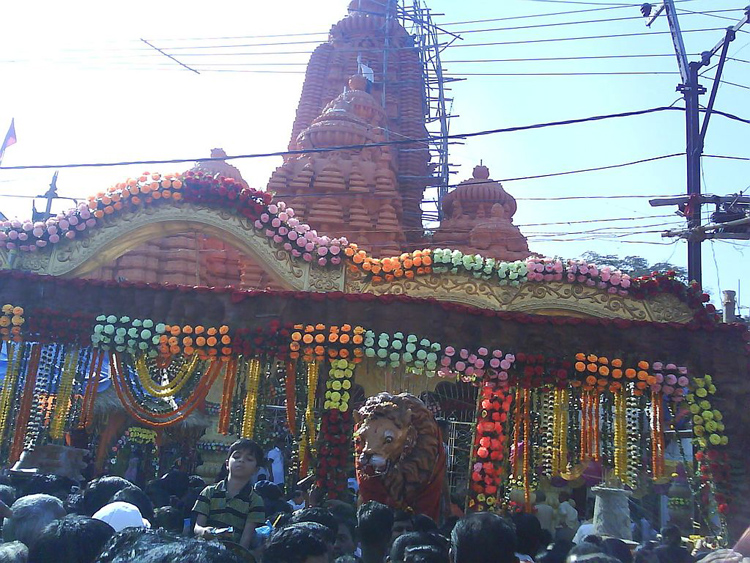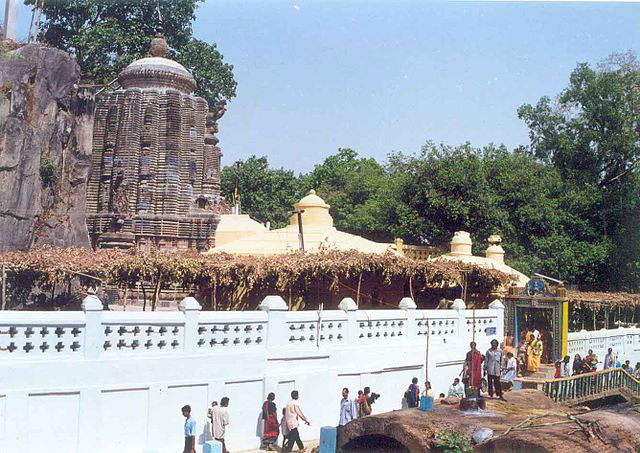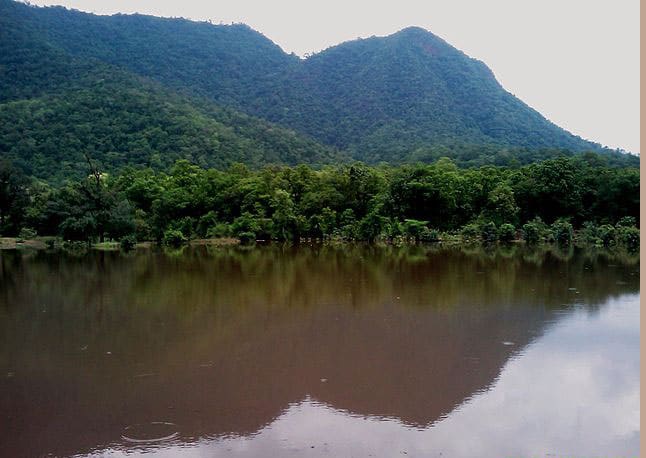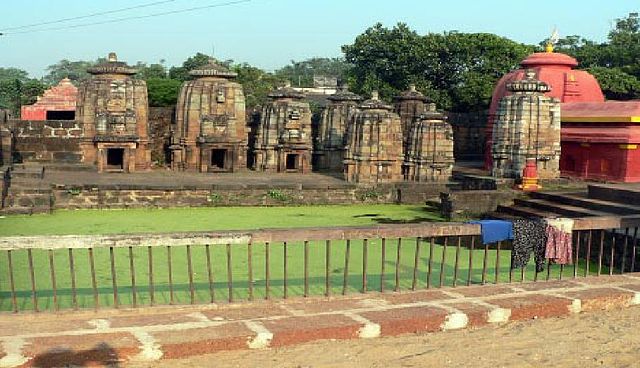
Image credit – Manas.pradh,
Located on the western border of the state, the place was earlier a part of Sambalpur. Though limited in number, the tourist attractions gain value by the importance attached to it. Gandhamardan, one of the destinations here is associated with the period of Ramayana and it finds mention in the notes of Hieun Tsang, the famous Chinese traveler. Scenic, ancient Bargarh makes your visit memorable. Here are some tourist destinations to visit in Bargarh.
- Kedarnath Temple
- Debrigarh Wildlife Sanctuary
- Gandhamardan
- Nrusinghnath Temple
- Nrusimhanath Waterfalls
- Chaldhar Waterfall
- Papaharini
- Papanga Hill
1. Nrusinghanath
 Photo by Sukantasarangi1Nrusinghnath is one of the most worshipped deities in Orissa and is an avatar Lord Vishnu. The temple of Nrusinghnath was built in 1413 A.D on March 17 as inscribed. The temple is only 45 ft high and is divided into two parts. The first part is the seat of Lord Nrusinghnath while the other part has four pillars which are supporting three gates. The architecture of this temple is one of its kinds in Orissa. The inner sanctum has statues of the Nav Grahs or the nine planets, Jamuna, Ganga, Nandi and many others. There are idols of eight-handed Ganesha and Sahadev, the cow-herd, which are carved near the Nav Grahs. The original idol of Nrusinghnath also resides in the temple. The temple is a unique site that takes the visitor by awe. Apart from being of religious importance the place has a mesmerising aura and offers a unique blend of architecture leaving imprints from various eras of life that have existed in this place.
Photo by Sukantasarangi1Nrusinghnath is one of the most worshipped deities in Orissa and is an avatar Lord Vishnu. The temple of Nrusinghnath was built in 1413 A.D on March 17 as inscribed. The temple is only 45 ft high and is divided into two parts. The first part is the seat of Lord Nrusinghnath while the other part has four pillars which are supporting three gates. The architecture of this temple is one of its kinds in Orissa. The inner sanctum has statues of the Nav Grahs or the nine planets, Jamuna, Ganga, Nandi and many others. There are idols of eight-handed Ganesha and Sahadev, the cow-herd, which are carved near the Nav Grahs. The original idol of Nrusinghnath also resides in the temple. The temple is a unique site that takes the visitor by awe. Apart from being of religious importance the place has a mesmerising aura and offers a unique blend of architecture leaving imprints from various eras of life that have existed in this place.2. Gandhamardan
 Photo by Amitabh Patra,As per the epic Ramayana, while Lord Hanuman was carrying the entire mountain mass to Lanka so as to find a cure for Laxman by providing him with Sanjeevani. It is believed that a part of mountain was dropped here while on the way to Lanka. Gandhamardana is the synonym to that portion of the mountain mass. Today the places houses over 5000 rare herbs that are studied and used for medicinal purposes. The place is also a wildlife sanctuary that houses rare birds and animals and are bliss to its spectators.
Photo by Amitabh Patra,As per the epic Ramayana, while Lord Hanuman was carrying the entire mountain mass to Lanka so as to find a cure for Laxman by providing him with Sanjeevani. It is believed that a part of mountain was dropped here while on the way to Lanka. Gandhamardana is the synonym to that portion of the mountain mass. Today the places houses over 5000 rare herbs that are studied and used for medicinal purposes. The place is also a wildlife sanctuary that houses rare birds and animals and are bliss to its spectators.3. Debrigarh Wildlife Sanctuary
Debrigarh Wildlife Sanctuary is an emerald heaven that is nestled in the Baraphad Hills that lie at an altitude of 2267 feet above sea level. The place is famous for being the base for Veer Surendra Sai, a freedom fighter who was said to be caught here by the British officials. The place is now converted into a wildlife sanctuary. Animals like Indian Bison, elephants and black bucks are the most important in the region. The sanctuary also houses an artificial water reservoir, Hirakud reservoir that attracts a number of birds that migrate here during the winters. The reservoir is the third largest congregation of birds in Orissa.4. Astasambhu
 Photo by Dazzlingdiksha,Astasambu or the Eight Shivas have been a vital part of Bargarh and its vicinity. During the reign of the Chauhans there were many temples made that were dedicated to Lord Shiva. Amongst those there are eight temples that are considered to be of utmost importance and together they form the Astasambu. These temples are Bimaleswar Temple at Huma, Nilakantheswar Temple at Nilji, Kedarnath Temple at Ambabhona, Visweswar Temple at Soranda, Baidyanath Temple at Deogaon, Swapneswar Temple at Sorna, Mandhata Baba Temple at Maneswar and Balunkeswar Temple at Gaisama. These temples though being short heighted, they are a fine example of intricate carvings and artistic architecture of the Chauhan Dynasty.
Photo by Dazzlingdiksha,Astasambu or the Eight Shivas have been a vital part of Bargarh and its vicinity. During the reign of the Chauhans there were many temples made that were dedicated to Lord Shiva. Amongst those there are eight temples that are considered to be of utmost importance and together they form the Astasambu. These temples are Bimaleswar Temple at Huma, Nilakantheswar Temple at Nilji, Kedarnath Temple at Ambabhona, Visweswar Temple at Soranda, Baidyanath Temple at Deogaon, Swapneswar Temple at Sorna, Mandhata Baba Temple at Maneswar and Balunkeswar Temple at Gaisama. These temples though being short heighted, they are a fine example of intricate carvings and artistic architecture of the Chauhan Dynasty.5. The Mighty Mandap
About 10 km away from the Nrusinghnath Temple one can sight an old Buddhist cave. This cave is called The Mighty Mandap. The cave dates back to the early Buddhist settlements about the time when Hiuen T’Sang visited the region and was mentioned as the Buddha Vihar in his works. The Mighty Mandap is an evidence of the Buddhist architectures of the bygone days.
No comments:
Post a Comment